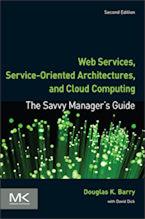Unified Modeling Language (UML)
The Unified Modeling Language™ (UML™) helps you specify, visualize, and document models of software systems. Using any one of the large number of UML-based tools on the market, you can analyze your future application's requirements and design a solution that meets them.
The flexibility of UML lets you model distributed applications that use just about any middleware on the market. Built upon the MOF meta-model which defines class and operation as fundamental concepts, works with object-oriented languages and environments such as C++, Java, and C#.
Also see the Common Warehouse Meta-Model (CWM).
Organization: Object Management Group
More information: UML page on the OMG website
Context for Unified Modeling Language (UML)
Related Articles for Unified Modeling Language (UML)
Author
Douglas K Barry
Principal
You may use this material for your work or classes. Reprint Policy. Be sure to check the menu at the left for other articles available on this site.
The Savvy Manager's Guide
Douglas K Barry is also the author of a book that explains Web Services, service-oriented architecture, and Cloud Computing in an easy-to-understand, non-technical manner.
Web Services, Service-Oriented Architectures, and Cloud Computing: The Savvy Manager's Guide (Second Edition)
by Douglas K Barry with David Dick
This is a guide for the savvy manager who wants to capitalize on the wave of change that is occurring with Web Services, service-oriented architecture, and—more recently—Cloud Computing. The changes wrought by these technologies will require both a basic grasp of the technologies and an effective way to deal with how these changes will affect the people who build and use the systems in our organizations. This book covers both issues. Managers at all levels of all organizations must be aware of both the changes that we are now seeing and ways to deal with issues created by those changes.

